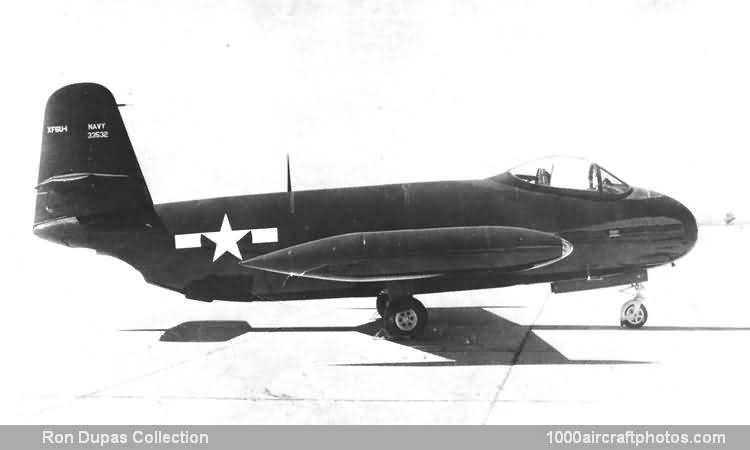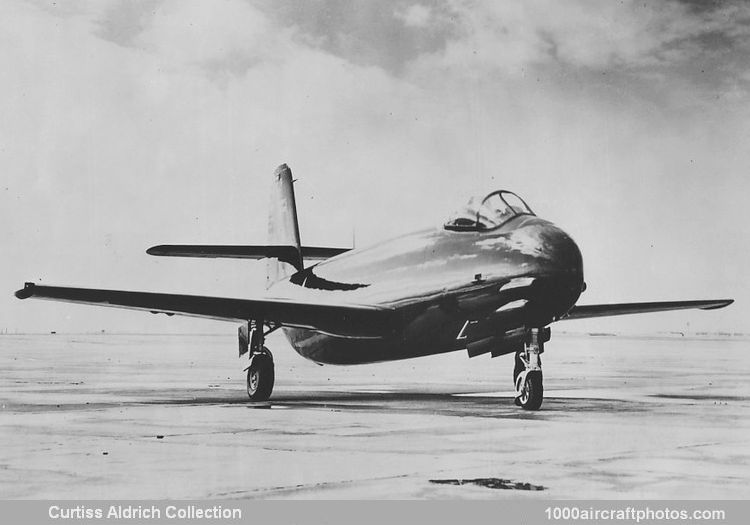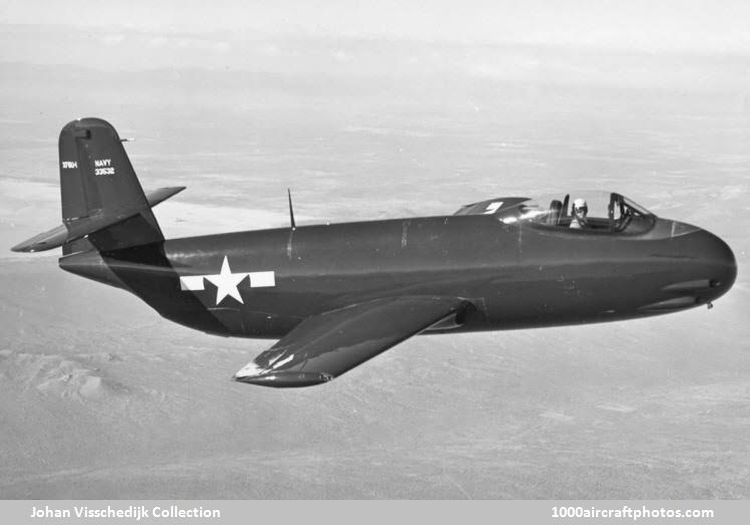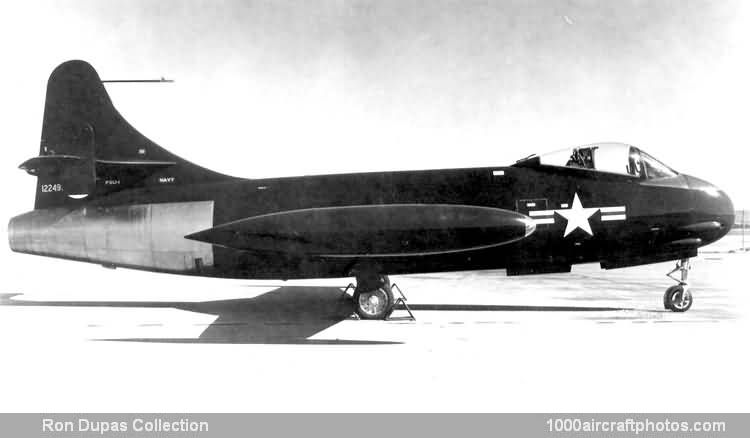06/30/2012. Remarks by
Johan Visschedijk: "On September 5, 1944, the USN's Bureau of Aeronautics distributed a proposal request for a single-seat shipboard fighter powered by the Navy-sponsored Westinghouse 24C (J34) turbojet. Vought proffered the V-340 and this, assigned the designation XF6U-1, was awarded a three-prototype contract (BuNos. 33532 to 33534). Powered by a 3,000 lb (1,361 kg) st J34-WE-22 turbojet, the first XF6U-1 flew on October 2, 1946.
XF6U-1 (33532) (
Curtiss Aldrich Collection)
A low mid-wing monoplane with an all-metal structure and an armament of four 0.787 in (20 mm) M3 cannon, the XF6U-1 was largely covered by Vought-developed Metalite skinning, this comprising two thin sheets of aluminum sandwiching a balsa wood core, and used Fabrilite, a glass fiber and balsa sandwich, for the vertical tail and intake ducts. Dubbed Pirate by the manufacturer, the XF6U-1 displayed a number of unsatisfactory characteristics from the outset, the vertical tail undergoing several redesigns and numerous other modifications being introduced to improve handling.
XF6U-1 (33532) (
Johan Visschedijk Collection)
The XF6U-1 was also underpowered, and to rectify this particular shortcoming, the third XF6U-1, which had entered flight test on November 10, 1947, was fitted with a Solar A-103A afterburner with which it resumed flight test in May 1948, becoming the first USN fighter with this form of power boost. In the meantime, on February 5, 1947, a production order for thirty F6U-1s (BuNos. 122478 to 122507) had been placed and these were to be powered by the J34-WE-30A engine with a military thrust of 3,150 lb (1,429 kg) boosted by afterburning to 4,100 lb (1,860 kg).
F6U-1 (12249_) (
Ron Dupas Collection)
The first F6U-1 was flown on March 5, 1949, twenty being assigned to a development squadron (VX-3), but the type was considered thoroughly unsatisfactory, and, on October 30, 1950, Vought was informed by the BuAer: "The F6U-1 had proven so sub-marginal in performance that combat utilization is not feasible." Consequently, the thirty F6U-1s - which had averaged only 31.5 flying hours per aircraft - were consigned to arrester gear and barrier development, damage trials and technical training."




